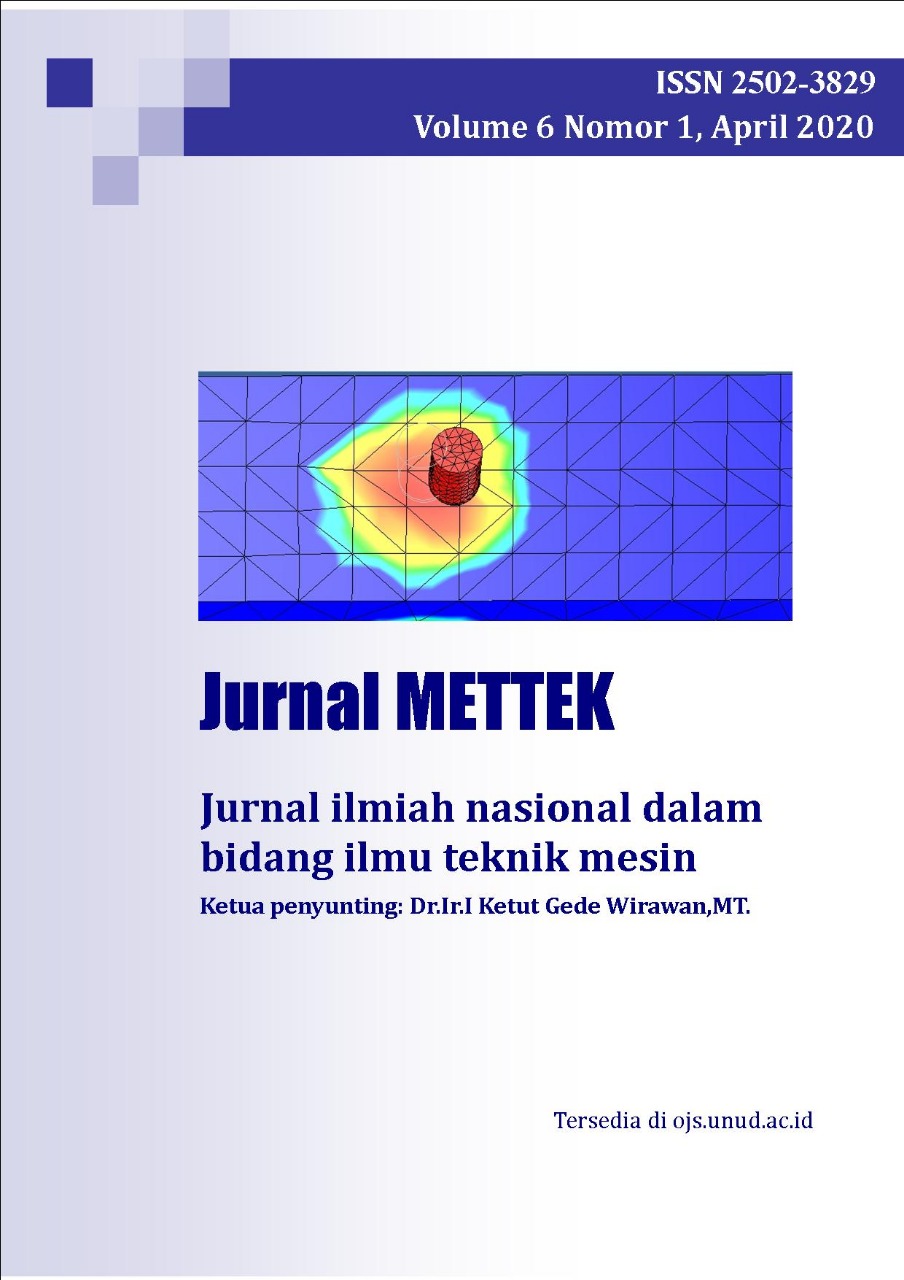Perlakuan Termomekanik Paduan Mg-Gd Sebagai Material Implan Mampu Luruh
Abstract
Paduan Mg-1,6Gd (wt%) mempunyai potensial sebagai material implan yang mudah larut dalam tubuh. Penambahan Gd kedalam magnesium dan selanjut di proses melalui termomekanik bertujuan untuk memperbaiki sifat-sifat mekanik yaitu kekerasan, kekuatan, ketangguhan dan keuletan dan juga dapat mengontrol laju korosi dalam lingkungan biologis. Perubahan mekanik yang terbentuk akibat penambahan sedikit Gd (1,6wt%) kedalam Mg kemudian diproses termomekanik melalui ekstrusi dan rolling yang dikaitkan dengan hasil strukturmikro melalui ukuran butir dan phasa. Proses termomekanik dilakukan pada temperatur rekristalisasi (400-550 °C) paduan Mg-1,6Gd dengan reduksi 95 %. Pemeriksaan dilakukan di skala labor dengan menggunakan tahap-tahap metalografi dan pengujian tarik dengan ukuran sample yang standar ASTM E8. Uji kekerasan dengan menggunakan alat uji Hardness Vicker dengan berat 300 gram dan ditahan selama 15 detik. Pemerikasaan ini dilanjutkan dengan pengujian laju korosi dengan menggunakan cairan infus. Hasil menunjukan bahwa terjadi perubahan ukuran butir yang siknifikan pada paduan Mg-1,6Gd setelah proses termomekanik terutama pada proses ekstrusi panas yaitu mencapai 14 µm, namun kekerasan tertinggi terdapat pada proses pengerolan yaitu mencapai 50 HVN. Adanya sejumlah presipitat ditemui pada strukturmikro yang dapat mempengaruhi kekerasan akibat pengerolan. Sifat-sifat mekanik paduan Mg-1,6Gd juga dipengaruhi oleh presipitat, dimana kekuatan tertinggi adalah 197 MPa pada pengerolan dibanding ekstrusi hanya mencapai 187 MPa. Meskipun demikian keuletan terbesar dimiliki oleh pengerolan yaitu 26 %, sementara ekstrusi hanya mencapai 24 %. Pada pengujian korosi, pengerolan memiliki laju korosi yang lebih tinggi dibanding laju korosi ekstrusi yaitu 5,7 mmpy dalam larutan Ringer. Kedua proses termodinamik ini mempunyai peluang sebagai material implan yang mudah larut dalam tubuh, namun pengerolan lebih di rekomendasi baik dari sifat mekanik maupun laju korosi yang lebih terkontrol.
Mg-1,6Gd (wt%) alloys has potential as a degradable materials implant. The addition of Gd in magnesium and then subsequently processed through thermo-mechanics aims to improve mechanical properties such as hardness, strength, toughness, ductility and can also control the rate of corrosion in the biological environment.Mechanical can be changed by the small addition of Gd (1.6wt%) into Mg are then is processed through extrusion and rolling which are associated with grain size and phase. The thermomechanical process was carried out at a recrystallization temperature (400-550 °C). Mg-1,6Gd alloys was hot rolled with a reduction of 95%. The examination is carried out at a labor scale using metallographic steps and tensile testing with a standard of ASTM E8. Hardness test use the Hardness Vicker with 300 grams and held for 15 seconds. This examination is followed by testing the rate of corrosion using intravenous fluids. The results showed that there was a significant change in grain size in the Mg-1,6Gd alloys after the thermomechanical process, especially in the hot extrusion which reached 14 ?m, but the highest hardness was found in the rolling process which reached 50 HVN. A number of precipitates are found in micro structures that can affect violence due to rolling. The mechanical properties of the Mg-1,6Gd alloys are also affected by the precipitate, where the highest strength is 197 MPa on rolling compared to extrusion reaching only 187 MPa. However, the greatest tenacity is owned by rolling, which is 26%, while extrusion only reaches 24%. In corrosion testing, rolling has a higher corrosion rate than the extrusion corrosion rate of 5.7 mmpy in Ringer's solution. Both of these thermodynamic processes have opportunities as a degradable materials implant, but rolling is more recommended both in terms of mechanical properties and corrosion rates.
Downloads

This work is licensed under a Creative Commons Attribution-NonCommercial-ShareAlike 4.0 International License.

This work is licensed under a Creative Commons Attribution-NonCommercial-ShareAlike 4.0 International License.







